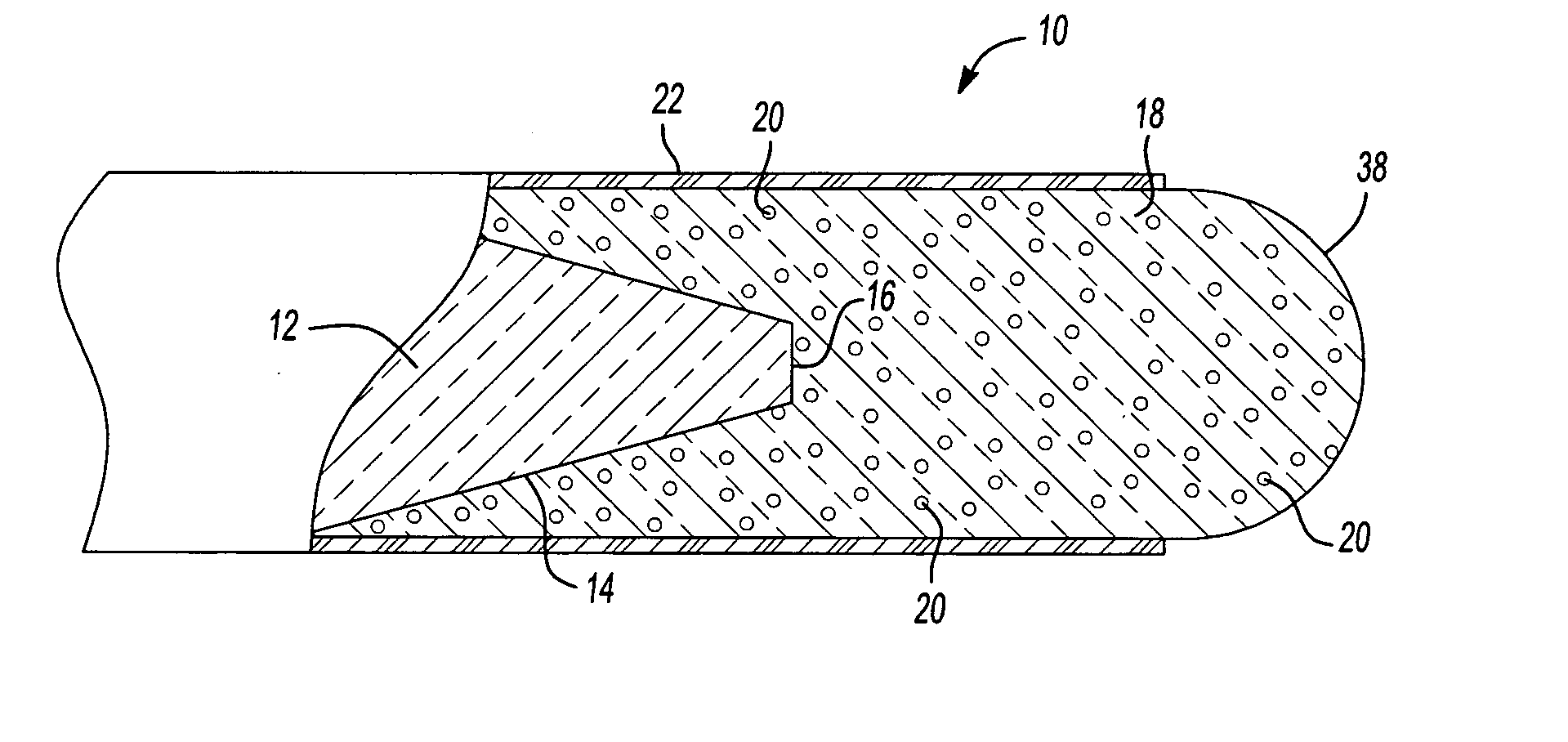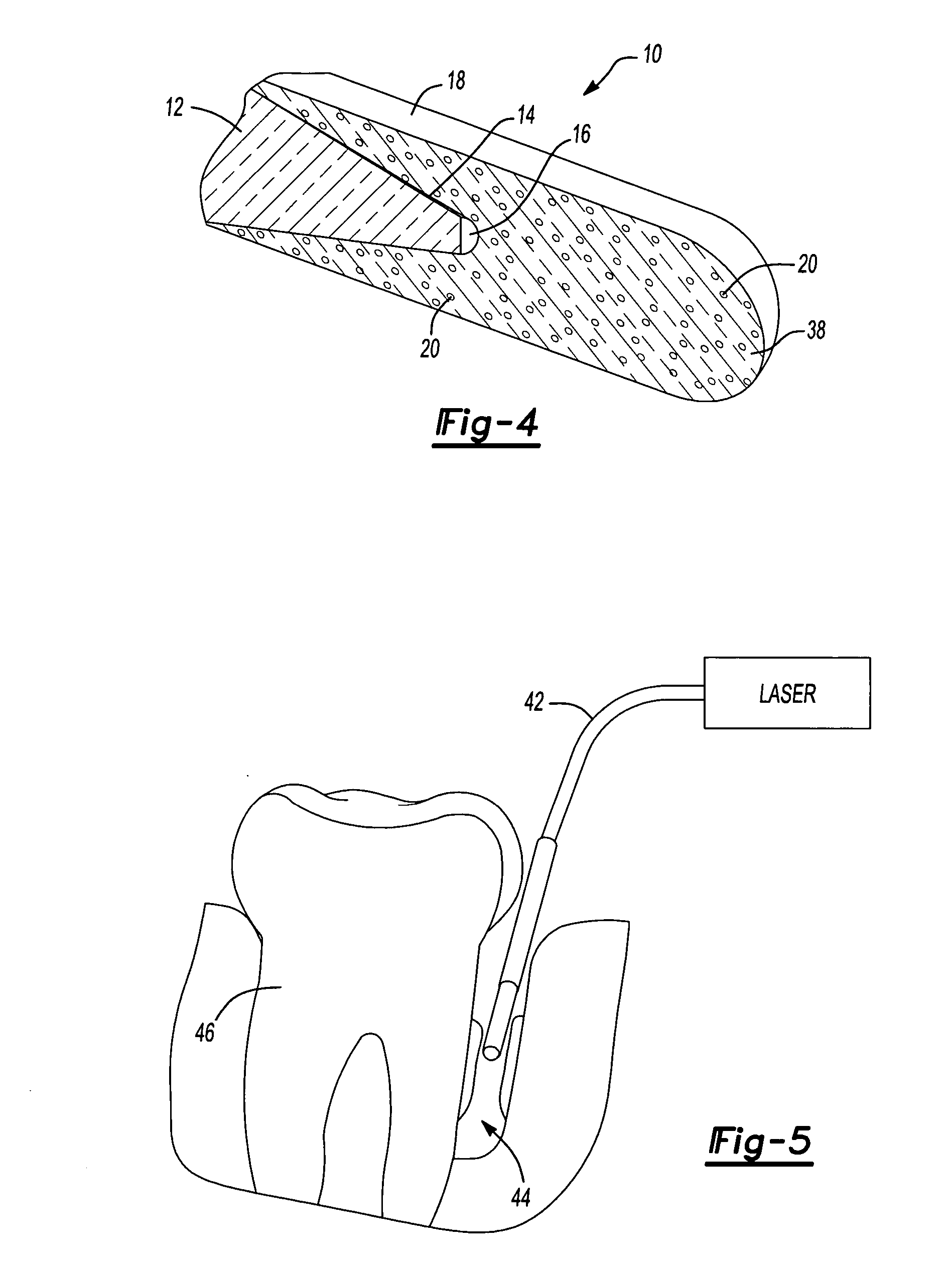Fiber optic probe tip
- Summary
- Abstract
- Description
- Claims
- Application Information
AI Technical Summary
Benefits of technology
Problems solved by technology
Method used
Image
Examples
Example
[0021] Referring now to FIG. 1, shown generally at 10 is a fiber optic probe or probe tip constructed in accordance with a preferred embodiment of the invention. The probe tip is constructed from an optical fiber 12 (e.g., a native, fused silica fiber optic cable). The end of the optical fiber 12 is tapered in the manner illustrated in the drawings. While the drawings illustrate a symmetrical, conical taper, with a truncated tip or face 16, it is to be appreciated that the taper may not follow a precise geometric configuration. The shape of the tapered end 14 may vary according to manufacturing techniques. For example, the tapered end 14 may be shaped as a full or partial wedge or may form any other shape that progressively reduces the cross-sectional area of the fiber 12 at the end.
[0022] The very end of the probe consists of a fill or terminal material 18, which is typically transparent or translucent, although not necessarily required for the entirety of the material. As shown i...
PUM
| Property | Measurement | Unit |
|---|---|---|
| Pressure | aaaaa | aaaaa |
| Diameter | aaaaa | aaaaa |
| Shape | aaaaa | aaaaa |
Abstract
Description
Claims
Application Information
 Login to View More
Login to View More - Generate Ideas
- Intellectual Property
- Life Sciences
- Materials
- Tech Scout
- Unparalleled Data Quality
- Higher Quality Content
- 60% Fewer Hallucinations
Browse by: Latest US Patents, China's latest patents, Technical Efficacy Thesaurus, Application Domain, Technology Topic, Popular Technical Reports.
© 2025 PatSnap. All rights reserved.Legal|Privacy policy|Modern Slavery Act Transparency Statement|Sitemap|About US| Contact US: help@patsnap.com



